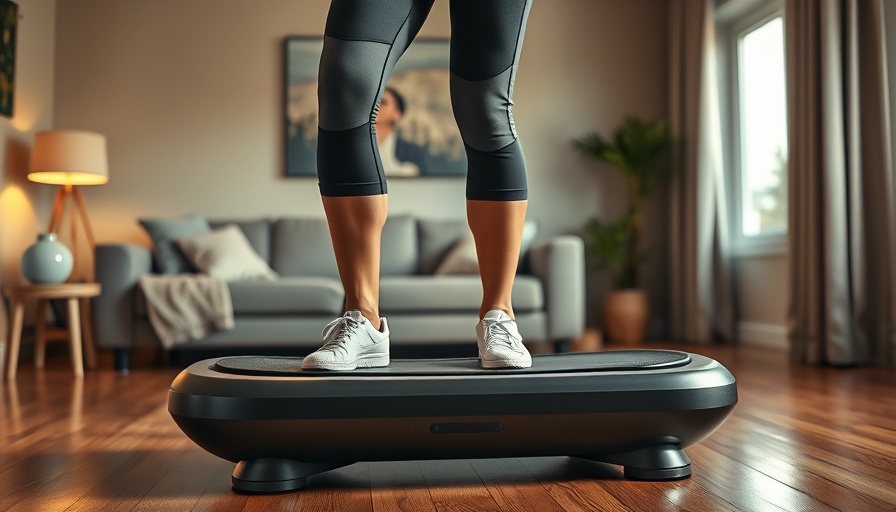
Exploring the Latest Fitness Craze: Vibration Plates
In today’s fast-paced world, finding effective ways to stay healthy can feel challenging, especially for those over 55. A recent trend that has emerged in the health and fitness community is the use of vibration plates. Marketed as a tool for enhancing weight loss and muscle strength, these plates offer a shake-up in traditional fitness approaches. But do they really work? Let’s dive into the science and opinions surrounding vibration plates.
Understanding Whole-Body Vibration
Whole-body vibration, the principle behind vibration plates, involves standing on a machine that vibrates at various frequencies. This seemingly simple technique promises to engage muscles and boost workout effectiveness with minimal effort. Proponents claim that just a few minutes on the plate can yield results comparable to an hour at the gym, making it an appealing option for those who may have mobility issues or who simply want to enhance their fitness journey.
What the Experts Say: Do Vibration Plates Deliver Results?
Experts in fitness and rehabilitation express mixed opinions regarding the efficacy of vibration plates. Some studies suggest that the vibrations can indeed stimulate muscle contractions, potentially aiding in fat loss and increased strength. Research shows that using vibration plates can improve flexibility and strengthen core muscles, which are vital for maintaining balance and reducing the risk of falls—an important concern for older adults.
However, other experts caution that relying solely on vibration plates without a comprehensive exercise routine might not deliver significant results. Physiologist Dr. Nancy Rodriguez points out that while they can be beneficial as a part of a wider fitness strategy, they shouldn’t replace traditional exercises like walking, swimming, or resistance training.
What Are the Unique Benefits of Vibration Plates?
For individuals aged 55 and older, the benefits of vibration plates can extend beyond weight loss. They may help improve circulation, enhance lymphatic drainage, and even reduce discomfort in joints. This makes them an attractive option for those seeking a low-impact alternative to conventional workouts. Additionally, using vibration plates can also be a social experience, providing an opportunity for gentle camaraderie among friends looking to maintain an active lifestyle together.
A Cautionary Note: Risks and Considerations
Although vibration plates offer intriguing advantages, they are not without risks. Individuals with certain medical conditions—like severe osteoporosis, recent surgeries, or abdominal hernias—are advised to consult with a healthcare professional before using these devices. As with any fitness trend, it’s essential to listen to your body and proceed with caution.
Practical Tips for Using Vibration Plates
If you decide to try vibration plates, begin with short sessions (5-10 minutes) at a lower frequency. Gradually increase the intensity and duration as your body adapts. It’s important to maintain a stable posture and ensure that your feet are properly placed on the plate to avoid injury. View it as a complementary tool to your regular exercise routine rather than a standalone fix.
Embracing Change: Personal Stories and Inspiration
Many individuals have shared their journeys of incorporating vibration plates into their fitness routines. For instance, local resident Annie, aged 62, reports feeling more energetic and confident since she started using the plates a few months ago. Her story highlights the feeling of community that can build around shared health experiences—sharing tips and success stories can motivate others on similar paths.
Conclusion: Finding Your Path to Wellness
As with any health trend, vibration plates can be a useful tool for enhancing weight loss and strengthening muscles, particularly for older adults in Louisiana seeking accessible fitness methods. However, it's vital to combine them with other forms of exercise and personal wellness practices for the best results.
Consider exploring your local gyms or wellness centers to see if they offer vibration plates as part of their fitness offerings. Engaging with these trends could open avenues to healthier living, and fostering connections with others on similar journeys can provide even greater motivation. Your health is an ongoing journey, and every step—whether it's a vibration or a walk in the park—counts!
Take charge of your health now and consider trying out vibration plates as part of your fitness regimen. Remember, every little effort contributes to a healthier lifestyle!
 Add Row
Add Row  Add
Add 



Write A Comment